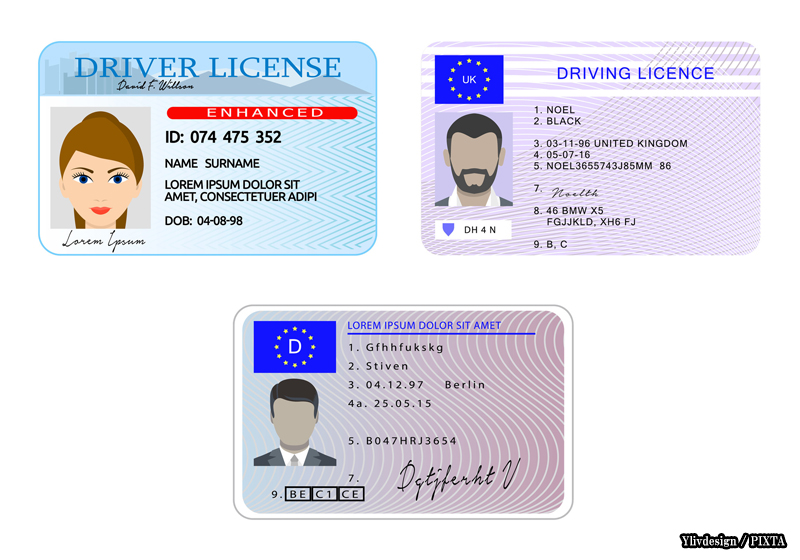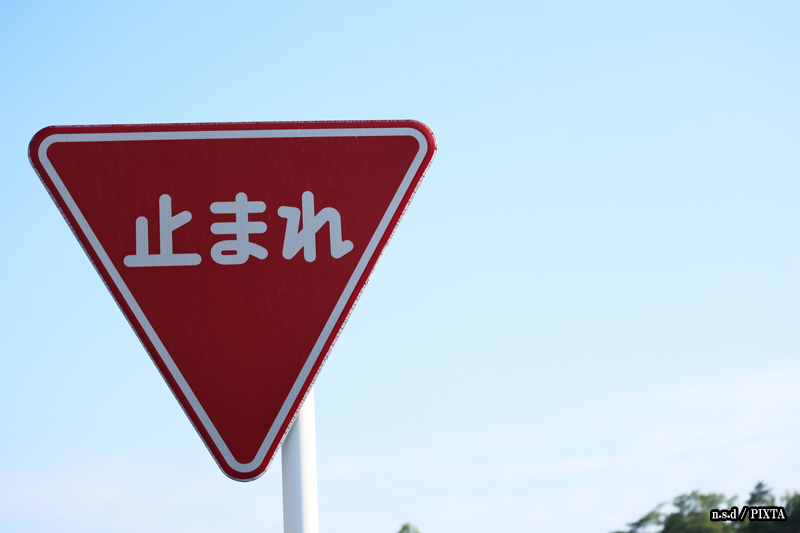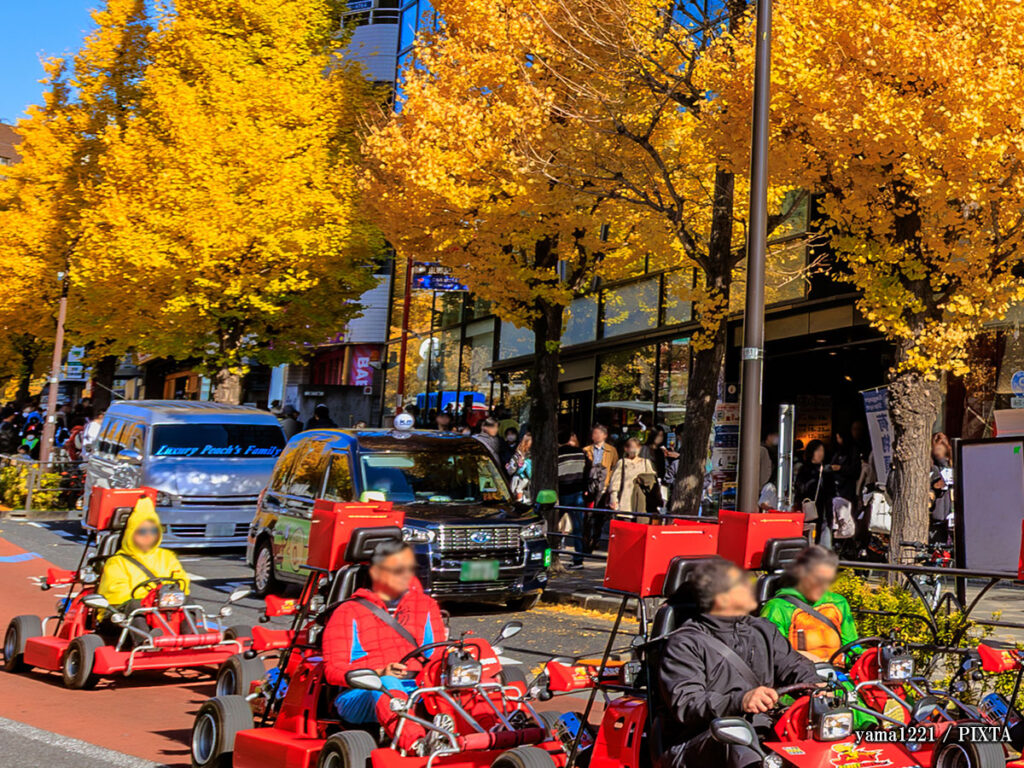Tokyo’s bustling streets and vibrant neighborhoods might not be the first place you’d expect to see go-karts zipping by—but in recent years, go-karting on public roads has become a bucket-list experience for many international travelers. Dressing up in costume and driving past Tokyo Tower or through Shibuya Crossing sounds thrilling, but it also raises a serious question: Is it safe?
This guide provides everything you need to know about go-kart safety in Tokyo—from local traffic rules to insurance coverage—to help you have a fun and safe experience on the streets of Japan’s capital.
Understanding the basics: go-karting on public roads in Japan
Unlike theme parks or racing tracks, most go-kart experiences in Tokyo take place on actual public roads. That means go-karts must comply with local traffic laws and share the road with buses, taxis, cyclists, and pedestrians.
Here are a few basic safety rules that every go-kart driver must follow:
Foreign tourists must have one of the following: a Japanese driver’s license, an International Driving Permit (IDP) based on the 1949 Geneva Convention, or a license with an official Japanese translation issued by countries like Switzerland, Germany, France, Taiwan, and others.
Go-karts are treated like regular vehicles, so drivers must stop at red lights, yield at crosswalks, and follow speed limits.
Go-karts are not allowed on highways or toll roads and must remain in designated driving lanes.
Driving under the influence is strictly prohibited and severely punished under Japanese law.
Some go-karts at closed circuits may lack a seatbelt, but if your vehicle is equipped with one, you’re required to wear it.

Image for illustrative purposes
Guided tours vs. solo driving: What’s the safer option?
Benefits of guided tours
- Experienced tour leaders:
Guides know the safest routes and help you navigate the city without stress. - Pre-checked vehicles:
Go-karts are typically checked before each tour to ensure they’re in good working condition. - Support in case of trouble:
If anything goes wrong, your guide can assist you in communicating with authorities or emergency services. - Language support:
Many companies offer instructions in English and other languages, reducing confusion.
Guided tours are highly recommended, especially for first-time visitors. They add a layer of safety and convenience that’s hard to beat.
Key safety tips while driving on Tokyo’s streets
Tokyo is an exciting but complex city to drive in. Here are the most important things to watch for when go-karting:
- Busy intersections:
Areas like Shibuya and Shinjuku are notorious for their heavy traffic. Stay alert and keep a safe distance from other vehicles. - Pedestrians and cyclists:
Tokyo streets are filled with people, especially near tourist attractions. Always yield at crosswalks and watch for sudden movements. - Narrow roads:
Some streets, especially in older neighborhoods, can be very narrow. Take extra care when navigating tight turns or passing parked vehicles. - Weather conditions:
Rain can make roads slippery and reduce visibility. Tours are usually canceled in bad weather, but always check in advance. - Traffic lights and road signs:
Pay close attention to traffic signals, especially turning arrows and pedestrian indicators.

Photo for illustrative purposes
What happens in case of an accident?
While accidents are rare, they can happen. That’s why it’s important to choose a reputable go-kart company that provides insurance and support in case of emergencies.
Things to know
- Insurance coverage:
Most go-kart tour companies include basic liability insurance in the rental fee. This typically covers damage to third parties but not always damage to the go-kart itself or personal injury. - Police reports:
If there’s an accident, you are required to report it to the police. Your guide will assist with this process. - Emergency services:
In case of serious injury, call 119 (ambulance) or 110 (police). Tour staff can help communicate if needed. - Responsibility:
Depending on the cause of the accident, the driver may be held financially or legally responsible. Always check the fine print before booking.
Preparing for a safe and enjoyable ride
Before you hit the streets in your go-kart, a little preparation can go a long way in ensuring your safety and enhancing your experience.
What to bring and do
- Valid license and IDP:
Double-check your documents before the tour. You may not be allowed to drive without the proper paperwork. - Dress appropriately:
Wear comfortable, weather-appropriate clothing. Avoid anything that might get caught in the go-kart’s mechanics. - Listen to the briefing:
Pay close attention to the safety briefing provided by your tour company. This often includes specific rules and route information. - Use provided safety gear:
Some tours offer helmets, gloves, and even costumes. Helmets are usually optional but recommended. - Don’t use phones while driving:
It may be tempting to film your experience, but using a phone while driving is dangerous and illegal in Japan. It’s also illegal to exit your vehicle and step onto the road without a valid reason, so if you’re taking a photo when you’re stopped at a light, do it as quickly as possible and stay inside your go-kart at all times.
Final thoughts
Go-karting in Tokyo can be a once-in-a-lifetime adventure, blending the excitement of motorsports with the thrill of sightseeing. But it’s not an activity to take lightly. Because you’ll be driving on real streets with real traffic, following the rules, choosing the right tour, and staying alert are key to having a fun and safe ride.
Whether you’re cruising through Akihabara or taking a selfie near Tokyo Skytree, always prioritize safety. With the right preparation and mindset, go-karting in Tokyo can be a highlight of your trip to Japan.












